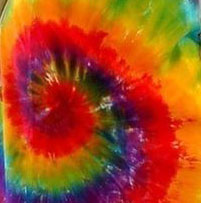Reactive dyes are one of the most “fast” dyes when applied to a cellulosic substrate due to its covalent bonding. Although reactive dyes can be used on different non-textile applications, these are a typical textile dyer’s choice for cotton and rayon due to the excellent fastness properties and bright shade range. Many textile dyeing application methods can be used such as exhaust, continuous, package, jet dyeing, garment dyeing, and printing.

Orco Reactive BF-Series™
Orco Reactive BF-Series™ reactive dyes are comprised of vinyl sulfone and monochlorotriazine linking groups offering benefits of both the Orco Reactive R-Series™ and ORCO Reactive I-Series™ reactive dyes, respectively. These are more stable to temperature, liquor-ratio, salt, and pH variations, thus providing excellent reproducibility for garment dyeing of cotton. The BF-Series™ reactive dye class can be dyed in conjunction with R-Series™ or I-Series™ dyes. Dyeing temperature can range between 140° F(60° C) and 175° F(80° C). However, maximum yield is obtained when dyed at 140° F(60° C).
Orco Reactive I-Series™
Orco Reactive I-Series™ reactive dyes have monochlorotriazine linking groups and are generally dyed at 175°F(80° C). These offer excellent leveling properties as well as high-exhaustion characteristics making them suitable for medium and deep shades. This class is recommended for cellulose and polyester/cotton blends in exhaust dyeing.
Orco Reactive MX-Series™
Orco Reactive MX-Series™ reactive dyes have dichlorotriazine(DCT) linking groups which promote high substantivity for cellulosics. Because of their high reactivity, a lower dyeing temperature(70-120°F(20-50° C)) is required to promote fixation with the fiber and therefore lend themselves to cold pad-batch, continuous, and tie-dye applications on cotton.
Orco Reactive R-Series™
Orco Reactive R-Series™ reactive dyes have vinyl sulfone linking groups which are typically dyed at 140°F (60° C). This reactive dye class is stable to acid hydrolysis, has excellent wash-off properties of unfixed dye, and is easy to strip. Applicable dyeing procedures are exhaust, continuous, cold pad-batch, garment dyeing, and printing. A wide shade range and good economics, especially with blacks and navies, make this a very popular reactive dye class.
